What cows taught me about water security
How often do you consider the water needs of cows you pass by when driving through the country? In this blog post, our summer student Erin reflects on a summer spent with a research lab that deals with that very issue!
Out to pasture
This summer, I’ve had the amazing opportunity to work with Dr. Kerri Finlay’s lab at the University of Regina in collaboration with Water Rangers. The lab samples dugouts and wetlands to collect data for PhD & Masters student’s research projects. This role has provided me with such valuable experience as an undergraduate biology student! Along with hands-on fieldwork and project coordination, it’s deeply expanded my understanding of the importance of water security.
Want to learn more about Saskatchewan?
Check out Erin’s other blog posts, including this one: 3 reasons why Saskatchewan is fascinating!
If you’re not from the prairie provinces, you may not know what a dugout is. And no, I’m not referring to the one you might find at a baseball field! Dugouts are man-made reservoirs mainly used for watering cattle and other livestock. This is where the Finlay lab comes in: they’re evaluating how dugouts act as both “sinks” and “sources” for greenhouse gases (e.g. carbon dioxide, methane, and nitrous oxide). They’re also monitoring water quality and coming up with methods to improve cattle health by mitigating sulfate levels.
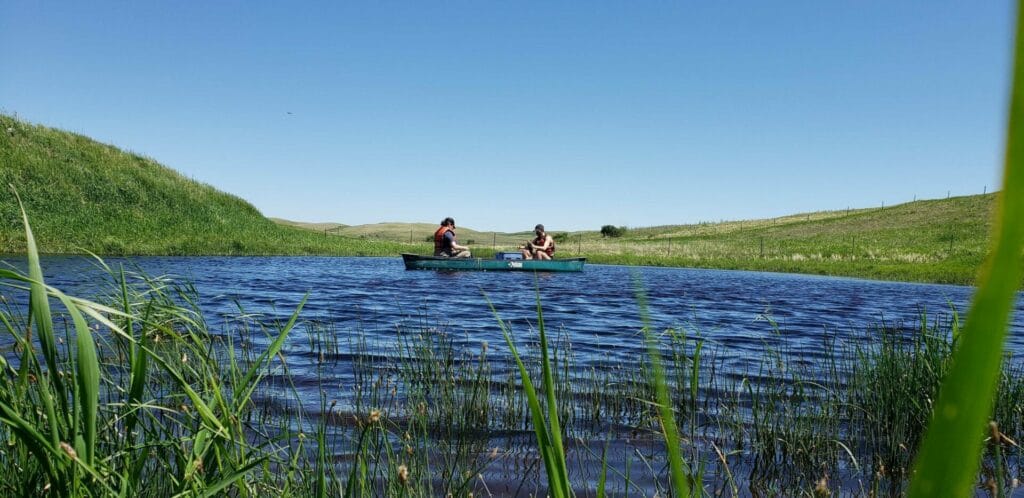
Prairie past & present
I grew up in Saskatchewan and spent considerable time on the farms of my grandparents. The significance of dugouts and cattle were well defined in my mind for a long time. Still, as a city dweller, I feel I was shielded from the realities faced by producers when it comes to water security. Southern Saskatchewan is largely composed of crop fields and the remnants of native prairie grassland – it’s also a drought prone place. My memory of southern Saskatchewan is characterized by far more rain throughout the spring and summer and certainly more snow in the winter, resulting in summer road trips with highways and ditches peppered with wetlands. Now, however, a drive across the country reveals land that is noticeably browner. Once sprawling wetlands have been reduced to a puddle or simply crusted earth. As a settler Canadian, I can only imagine what the experience of these changes feels like for Indigenous communities whose very cultural memory is tied to the land and water.
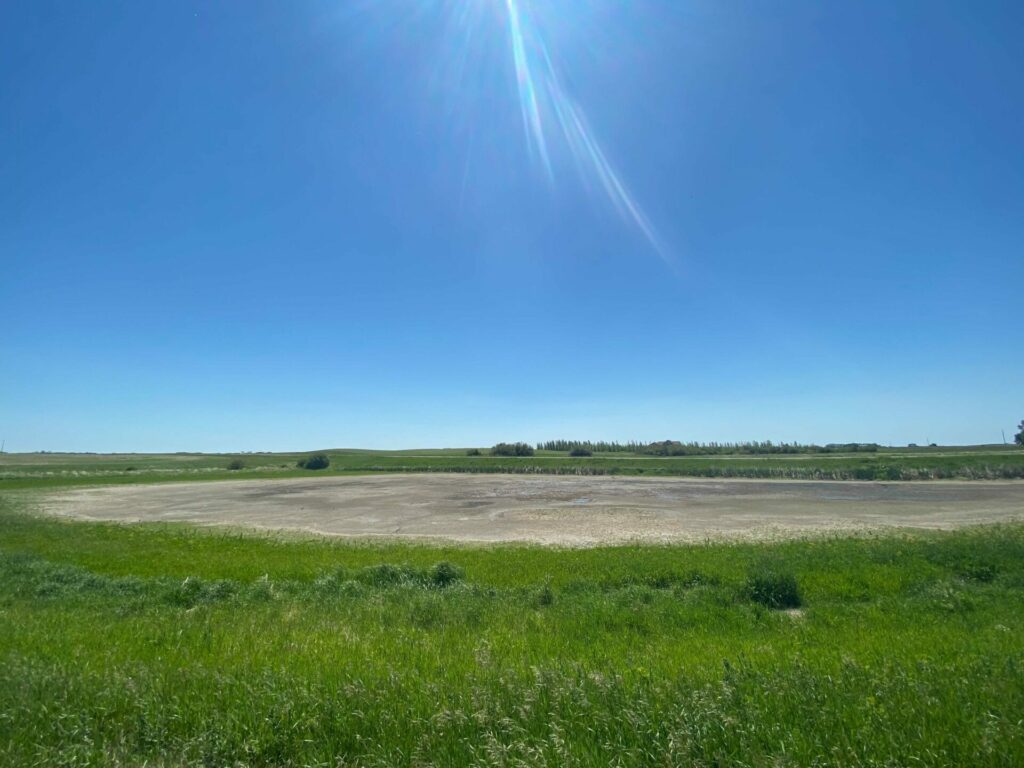
Safe drinking water for cows
Intense heat waves across Saskatchewan, Canada and indeed the world have presented life and death consequences for humans, wildlife and the environment. Animals that we rely on for food such as cattle are not spared the effects that prolonged heat waves can bring. With the tendency for drought in Saskatchewan plus the fact that the soil here can be rather saline, water quality in dugouts is a major concern.
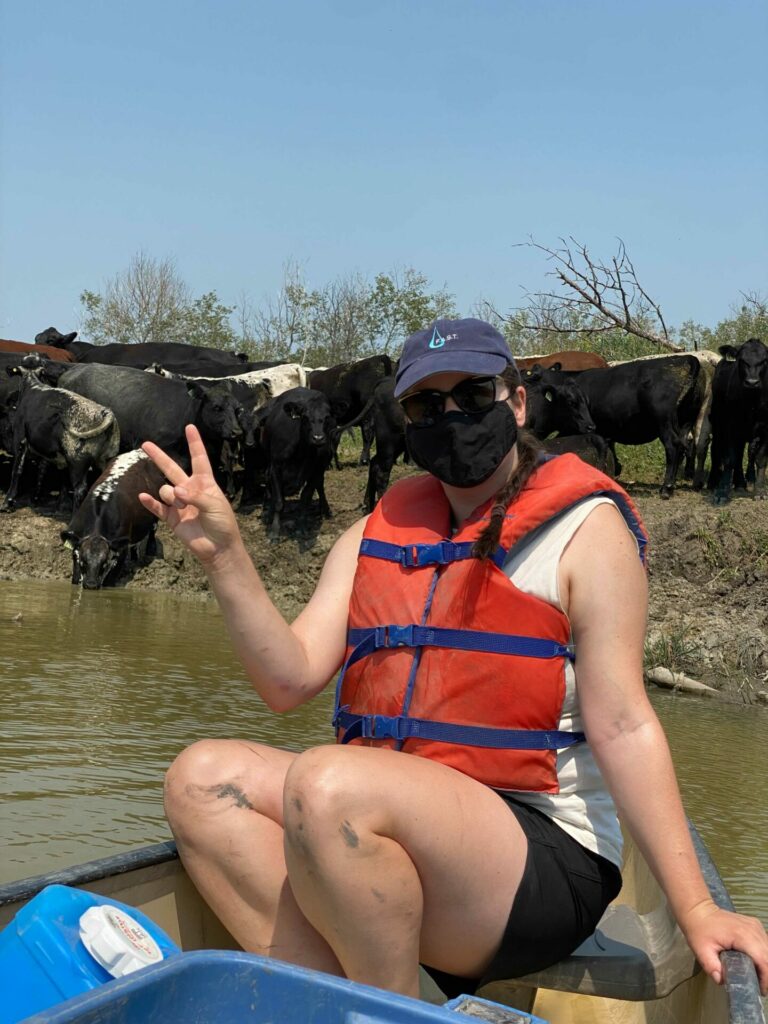
But drought is not the only challenge facing cattle in Saskatchewan. The naturally salty soils can make water toxic to cattle, particularly later in the summer when evaporation increases the concentration of salts. Similarly, fertilizer runoff increases nutrient levels in the water. This allows toxic blue-green algae (cyanobacteria) to grow, posing a serious threat to cattle and other wildlife. With this research, the Finlay lab aims to evaluate management options for improved water quality – like cleaning up the dugout via dredging and managing excess nutrients from fertilizer runoff by planting trees and other vegetation surrounding the dugout.
Of cows and men
For me, spending time in dugouts surrounded by curious cows really illuminates the needs of livestock in terms of safe drinking water. Their needs are so intrinsically tied to our own! With cyclical droughts in Saskatchewan worsened by ongoing climate change, the importance of research being conducted by Dr. Finlay’s lab alongside community monitoring is paramount.
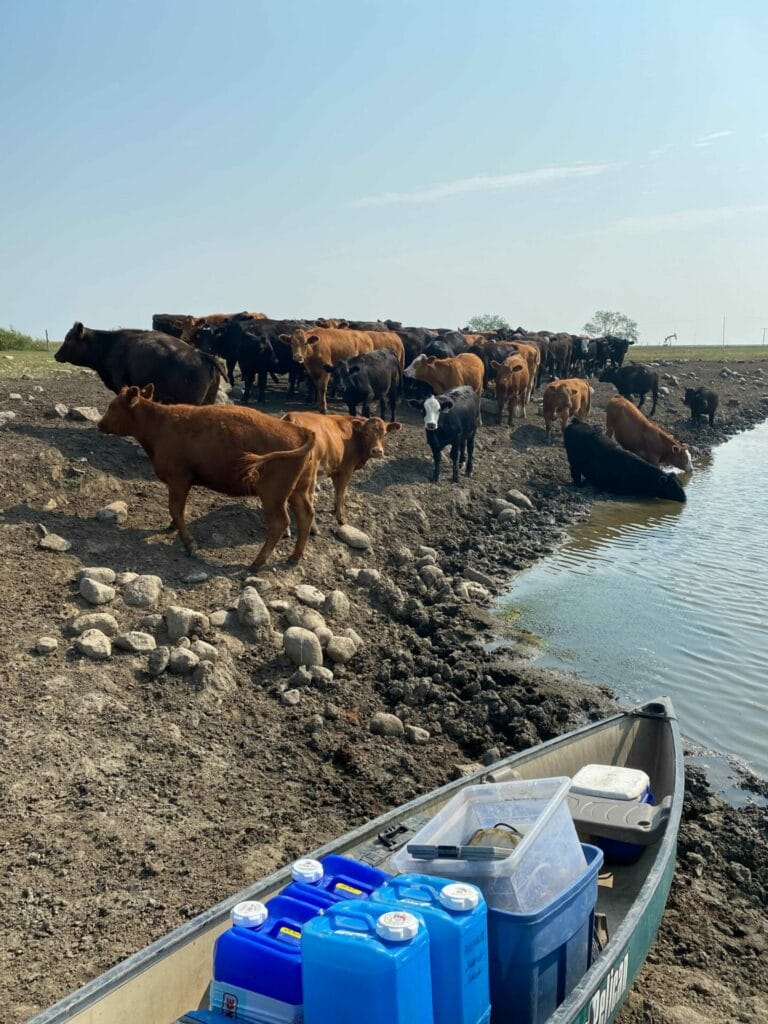
Teamwork makes the dream work!
They are big days out in the field: loading and unloading equipment, exposure to heat and sun, conducting the sampling and testing required to attain good data, all while floating in the canoe! It does present challenges that require mental and physical resilience. But with only a month left in the season, I couldn’t be more grateful for Dr. Finlay and all the lab members I got to work with this summer who made each long day completely enjoyable and full of learning!
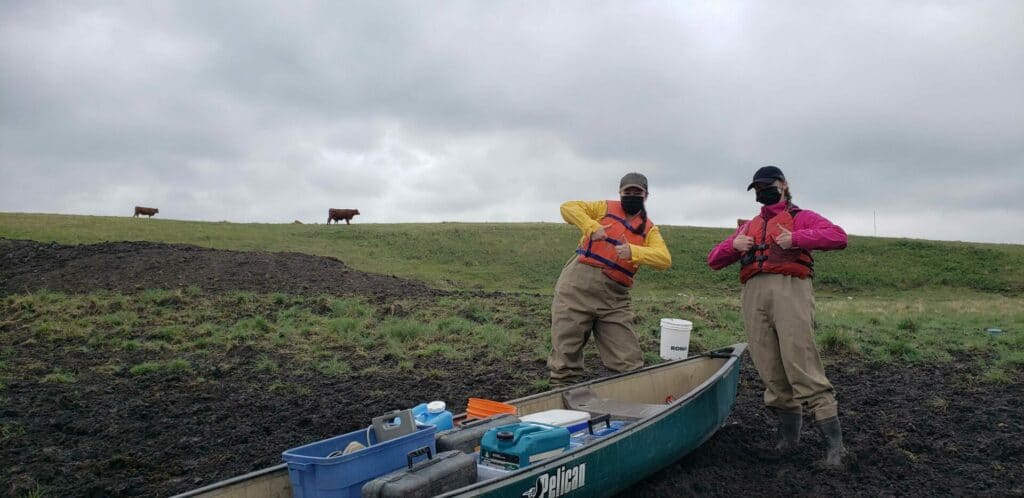
Connect With Us
Do you want to be a Water Ranger citizen scientist in Saskatchewan? Learn more about the project here.
Check out the Finlay lab’s socials
Instagram: @finlaylab
Tiktok: @finlaylab
Twitter: @finlayscience
Facebook: www.facebook.com/finlaylab
About Dr. Kerri Finlay’s research
For more information on research regarding dugouts, wetlands, greenhouse gases and community based water monitoring programs in Saskatchewan, check out Dr. Finlay’s website!
Dr. Finlay research website